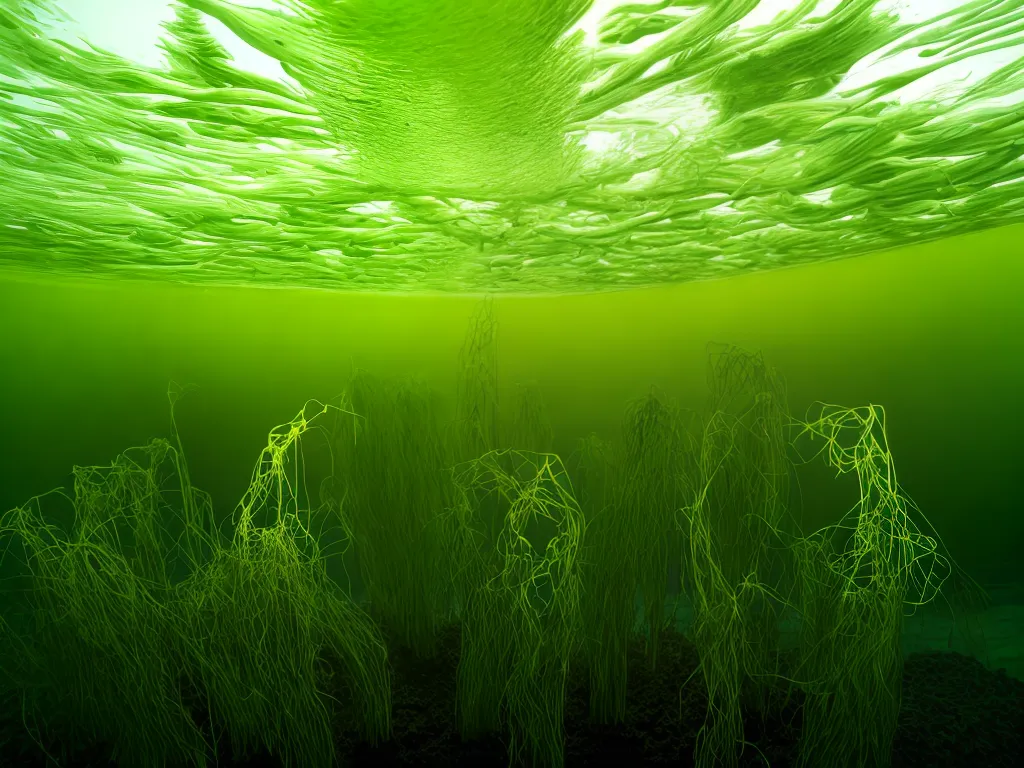
Algae are one of the most promising sources of renewable biofuel. Compared to other biofuel feedstocks like corn and sugarcane, algae can generate over 100 times more fuel per acre. With their rapid growth rates and abundance, algae may be the key to producing enough renewable fuel to displace a significant portion of global petroleum consumption.
What Makes Algae a Good Biofuel Source
Algae have many properties that make them well-suited for sustainable biofuel production:
-
High yields - Under ideal conditions, many algae species can double their biomass several times per day. Their oil content can exceed 80% by weight in some species. This results in much higher yields per acre than conventional crops.
-
Grow on non-arable land - Algae can grow on marginal lands unsuitable for food crops, reducing competition over arable land and freshwater resources. They can grow in saltwater, brackish water and wastewater.
-
Use waste resources - Algae growth can be coupled with wastewater treatment, providing nutrients from agricultural, municipal and industrial wastes. Algae also sequester CO2, so they can utilize flue gases from power plants.
-
Genetic malleability - Algae are among the most genetically malleable organisms known. Their biology can be optimized to enhance oil production through metabolic engineering and synthetic biology.
Algae Species for Biofuel Production
Many different algae species are being explored for their biofuel potential. Some of the major contenders include:
-
Microalgae - Microalgae are unicellular algae microscopic in size. Species like Chlorella and Dunaliella accumulate high levels of lipids suitable for biodiesel production.
-
Macroalgae - Also known as seaweeds, macroalgae are multicellular algae visible to the naked eye. Species such as Laminaria can be converted to biogas through anaerobic digestion.
-
Cyanobacteria - Also known as blue-green algae, cyanobacteria are bacteria that obtain energy through photosynthesis. Synechocystis and Anabaena species show promise as hydrocarbon producers.
Each type of algae has different advantages in growth rate, oil yield and ease of harvest. Researchers continue investigating and engineering strains to further improve biofuel potential.
Cultivation Methods
Algae can be cultivated using open ponds, closed photobioreactors, and hybrid approaches:
-
Open ponds - Open ponds provide large-scale algae growth at low cost in shallow basins. Raceway designs keep cultures mixed and circulating. Main challenge is controlling contamination.
-
Photobioreactors - Closed bioreactors enable precise control over growth conditions. Tubular and flat-panel reactors maximize light exposure. Higher cost limits scaling up production.
-
Hybrid cultivation - Two-stage systems use photobioreactors to inoculate algae into open ponds. Provides controlled growth and lower contamination risk before larger scale production.
Proper pond and bioreactor design along with optimal CO2 and nutrient inputs are essential to maximize algal biomass productivity.
Harvesting and Oil Extraction
Once cultivated, algae must be harvested and processed to extract their oil:
-
Harvesting methods - Algal cultures are concentrated by flocculation, filtration, centrifugation or ultrasonic aggregation. Desired oil content and species dictates optimal technique.
-
Drying - Algae paste is often dried prior to oil extraction, by spray drying, drum drying or sun drying. Reduces amount of biomass for processing.
-
Cell disruption - Algae cell walls must be disrupted to access oil reserves. Methods include chemical solvents, mechanical pressing, ultrasonication and enzymes.
-
Oil separation - After cell disruption, the oil is separated from biomass by pressing or solvent extraction. Further refining produces biodiesel or renewable diesel fuel.
Minimizing energy use during drying, cell disruption and oil extraction is key to ensuring algae-based fuels have a favorable net energy balance.
Economics and Environmental Benefits
Switching from fossil fuels to algae-based biofuels could provide tremendous environmental and economic benefits:
-
GHG emissions reduction - Life cycle analyses estimate algae biofuel can reduce greenhouse gas emissions by 50% or more compared to petroleum-based fuels.
-
Wastewater remediation - Algae cultivation provides biological wastewater treatment, removing nitrogen, phosphorus and other pollutants.
-
High value co-products - After oil extraction, the remaining algae biomass can be processed into animal feeds, fertilizers and other bioproducts.
However, substantial challenges remain in reducing costs and energy use throughout the algae-to-biofuel supply chain. Continued research on more productive algae strains, low-cost cultivation systems and efficient harvesting methods can help make algae fuel economical.
With their high yields and environmental advantages, algae may prove to be the ultimate sustainable source of renewable fuels. Realizing this potential will require leveraging biology and engineering to usher in an algae-based bioeconomy.